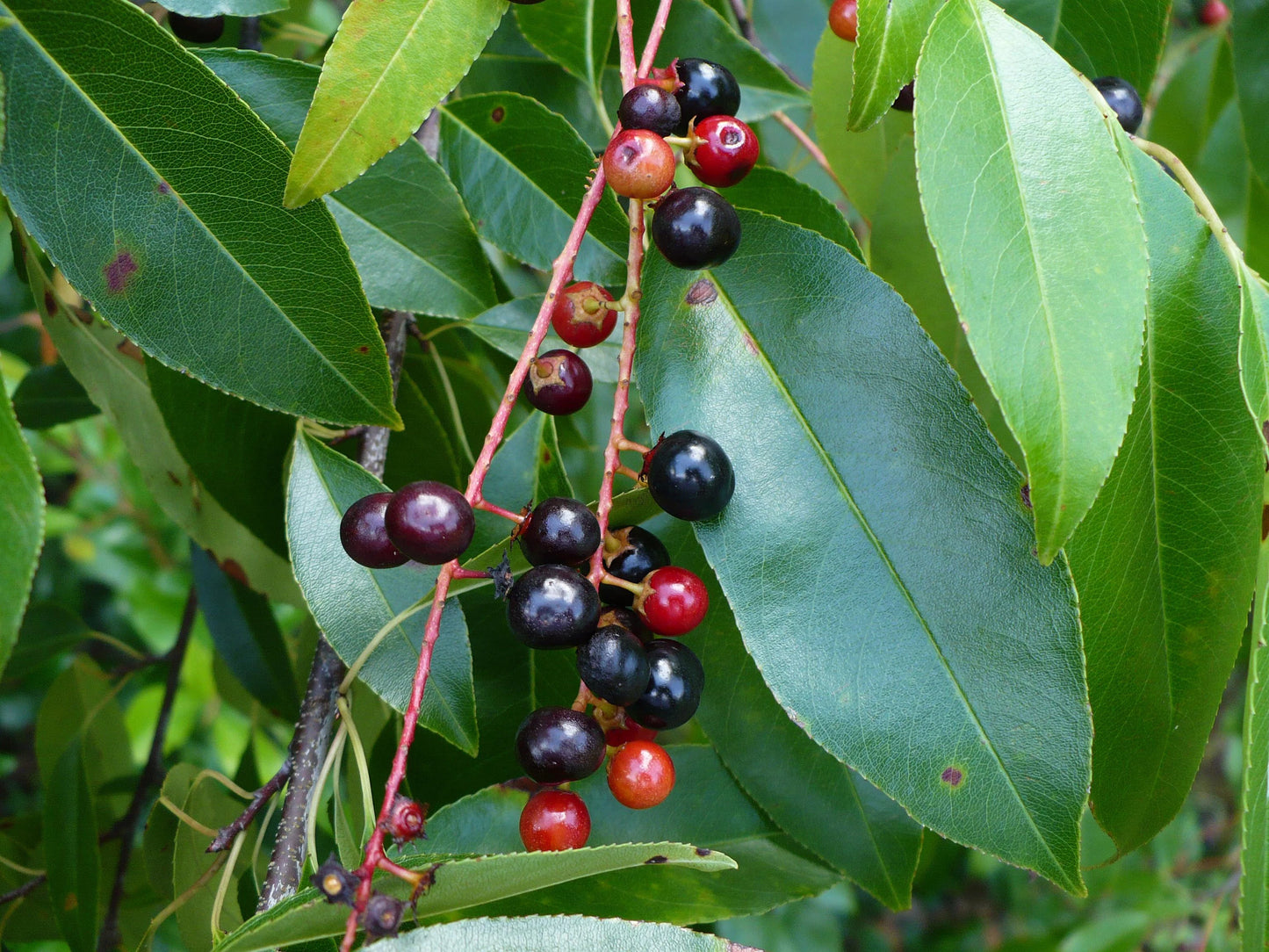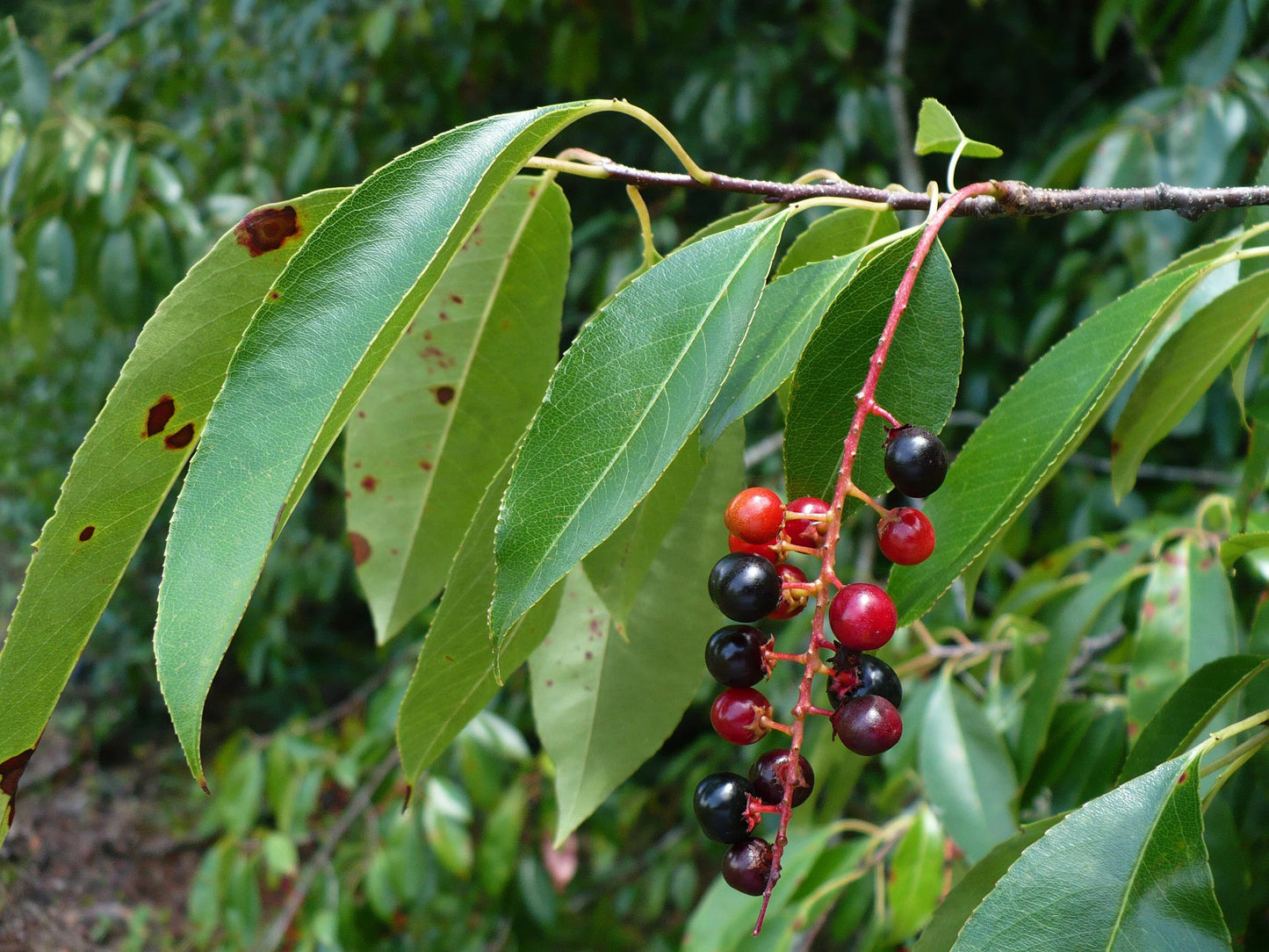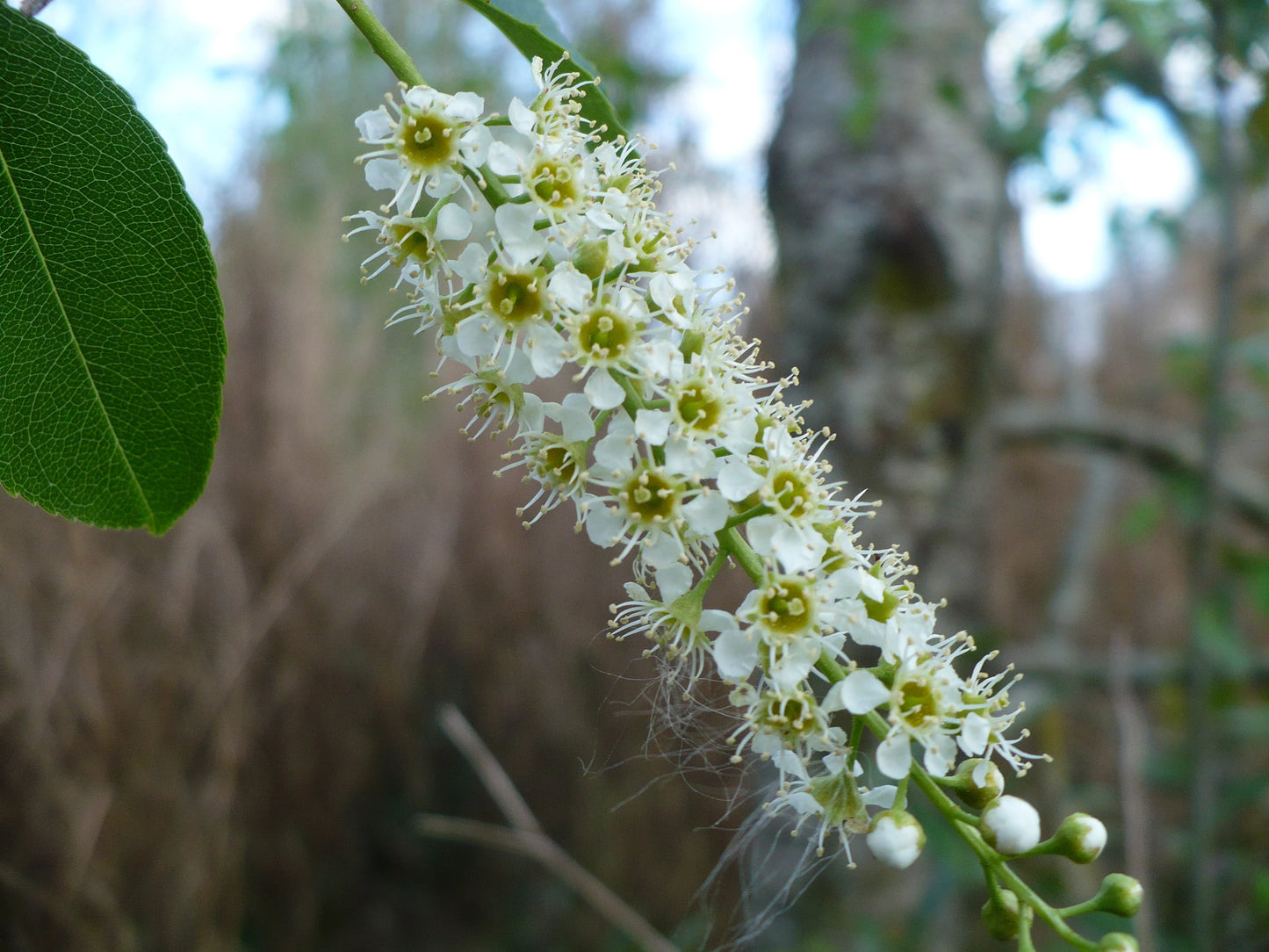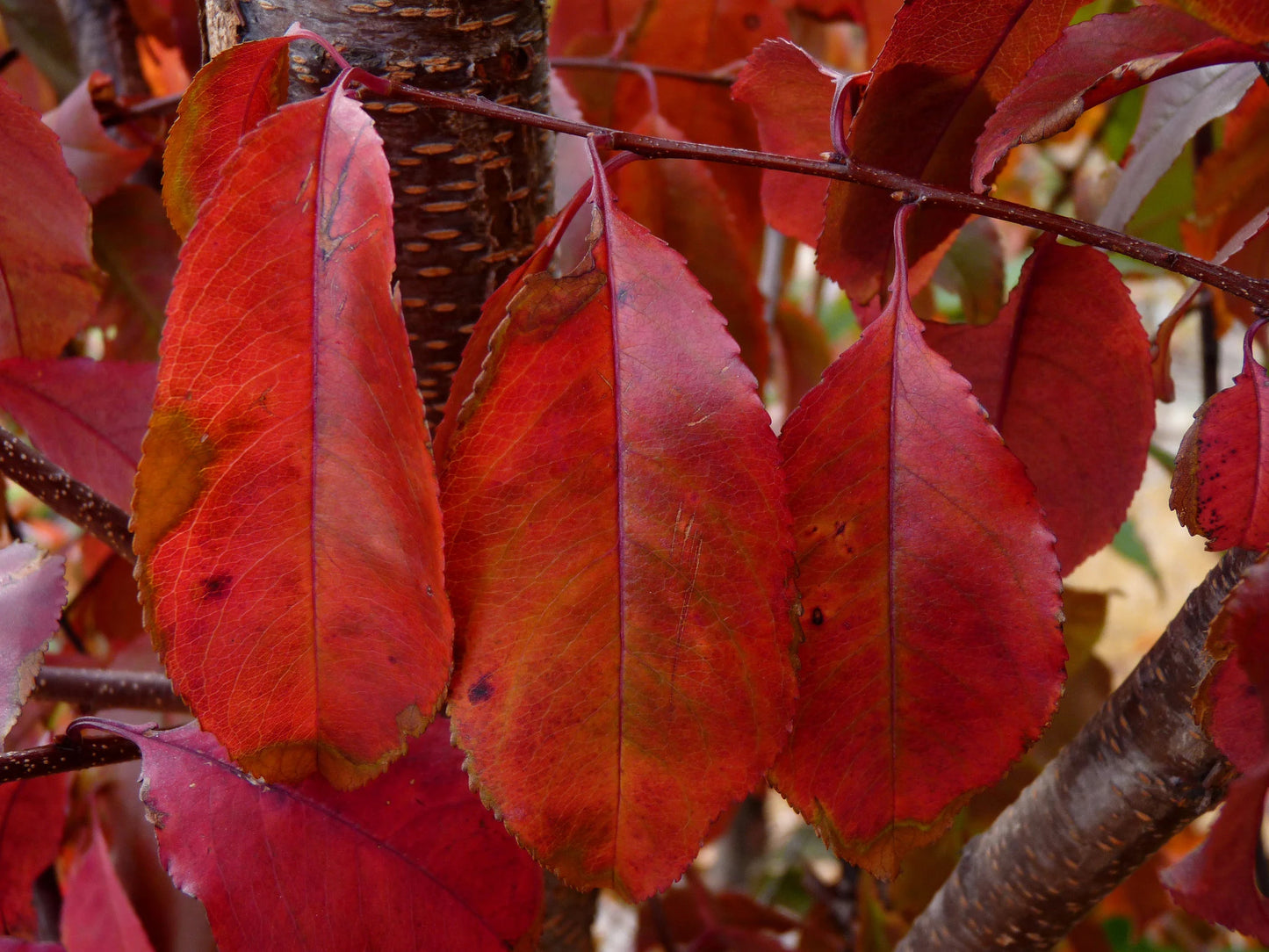Floridaseeds
Black Cherry 20 Seeds Prunus serotina
Black Cherry 20 Seeds Prunus serotina
Couldn't load pickup availability
Prunus serotina, commonly known as black cherry or wild cherry, is a deciduous tree native to North America. Here's a description:
Appearance: Black cherry is a medium to large-sized tree that typically grows to heights of 15 to 30 meters (50 to 100 feet) tall, although it can sometimes reach even greater heights under optimal conditions. It has a straight trunk with smooth, dark gray bark when young, which becomes rough and scaly with age.
Leaves: The leaves of Prunus serotina are simple, alternate, and ovate to lanceolate in shape, with finely serrated margins. They are typically 5 to 10 centimeters (2 to 4 inches) long and dark green in color, turning yellow to reddish-orange in the fall before dropping.
Flowers: Black cherry produces clusters of small, white flowers in early to mid-spring, usually before the leaves emerge. The flowers have five petals and are arranged in elongated racemes.
Fruit: The fruit of Prunus serotina is a small, spherical drupe that ripens from green to red and finally to dark purple or black in late summer to early fall. The cherries are sweet and juicy, although they have a bitter flavor if eaten fresh due to the presence of cyanogenic glycosides.
Habitat: Black cherry is a common and widespread tree species found in a variety of habitats, including forests, woodlands, fields, and disturbed areas. It thrives in well-drained soil and is often found on mesic sites.
Ecological Importance: Black cherry is an important component of many forest ecosystems, providing food and habitat for a variety of wildlife species. The fruit is consumed by birds and mammals, which help disperse the seeds. Additionally, the leaves are food for various caterpillars and insects.
Uses: Prunus serotina has a long history of human use. The wood is valued for its strength, hardness, and beautiful grain, making it popular for use in furniture, cabinetry, and woodworking.
Materials
Materials
Shipping & Returns
Shipping & Returns
Dimensions
Dimensions
Care Instructions
Care Instructions
Share














